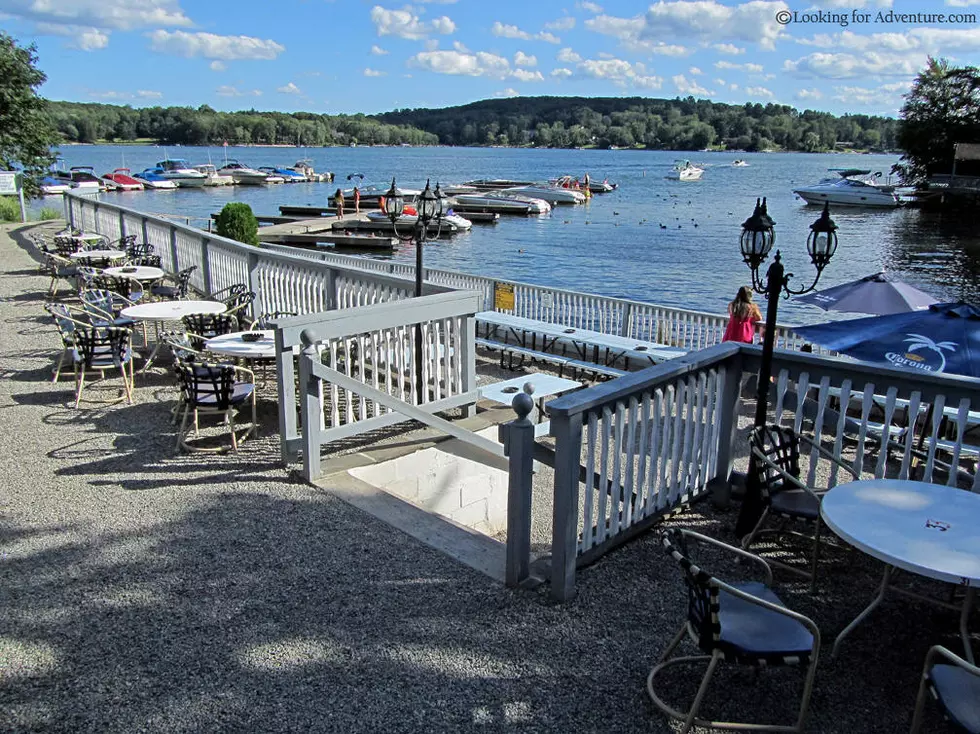
6 Connecticut Towns With Really Weird Names
As expensive as it is to live here in CT, there are still hundreds of fun facts that might surprise you.

Let's face it, between the Native American history in Connecticut and all the stories about why we have so many towns that end in 'Bury,' it's no wonder Connecticut has a generous supply of towns, villages, and boroughs with what many would call, unusual names. Out of the dozens that qualify, I've chosen six of my favorites for you to check out.
- Bozrah, CT
Bozrah, CT 1Bozrah
Bozrah is a town in New London County and according to legend, the community really wanted to name their town, 'Bath' after the famous spa in England.
The dude who was appointed to carry the request to Hartford had a quirky personality and dressed in a weird multi-colored fashion. One of the town officials thought this dude dressed like someone who lived in Bozrah of Edom which was located between Israel and Saudi Arabia between the 13th and 8th centuries B.C. Isn't that wild?
Town officials loved the analogy so much they decided to name the town 'Bozrah' instead of 'Bath' when it was incorporated in 1737 A.D.
- 2
Fenwick
The Borough of Fenwick is located in Middlesex County and was created in 1899 and is next to Old Saybrook on the southern coast of Connecticut.
Fenwick's population of around 60 individuals is primarily made up of summer homes and the Historic District has been added to the National Register of Historic Places. Fenwick was named after Lady Fenwick who contributed to the success of the colony by hunting wild game to contribute to the food supply. She passed in 1648.
- 3
Hazardville
Hazardville is located in Hartford County and is a section of the town of Enfield. How about this fun fact. According to connecticuthistory.org, 40% of all the gunpowder used in the Civil War came from Powder Hollow in Hazardville but that's not how the town got its name. That honor goes to Colonel Augustus Hazard, the gunpowder manufacturer.
- 4
Moodus
With a rousing population of 1,413 as of the 2010 census, Moodus is a village in the town of East Haddam. Before English settlers purchased the village in 1662 for $100, Native American Algonquians called the area 'the place of noises.'
The Moodus area has always been known as a prime area for earthquakes, especially the quake that rocked the area on May 16, 1791, that knocked down stone walls, homes, and chimneys and was felt as far away as New York City.
During the 1940s and 50s, Moodus was dubbed the 'Catskills of the Connecticut' because of its 30 resorts scattered throughout the area that attracted Jewish and Christian vacationers from New York, New Jersey, and Massachusetts.
- 5
Noank
Noank is a village in the town of Groton which sits at the mouth of the Mystic River. In 1614, Noank was the summer campground for the Pequot people before they were chased out in 1655 by the Pequot War.
Noank has always been a village built on the traditions of fishing, lobstering, and boat building, and each and every year this quintessential New England village has held a Memorial Day parade that dates back to 1876.
It's certainly not surprising that most of the community has been listed on the National Register of Historic Places which includes homes and businesses dating back to 1840.
- 6
Poquetanuck
Poquetanuck is an unpronounceable village in the town of Preston, CT that was settled in the 17th century. In January of 2001, the Hartford Courant featured an article about the Village of Poquetanuck saying that driving through the village is like taking a trip through the 1800s.
The village was mainly known for its shipbuilding and mercantile center butt during the 1700s, residents made their living from coastal trading, lumber production, iron making, and shipbuilding.
The Poquetanuck Village Historic District is visible proof that the preservation of 18th and 19th-century structures of both homes and businesses makes this historic village one of the most authentic representations of colonial living in all of New England.
More From WRKI and WINE









